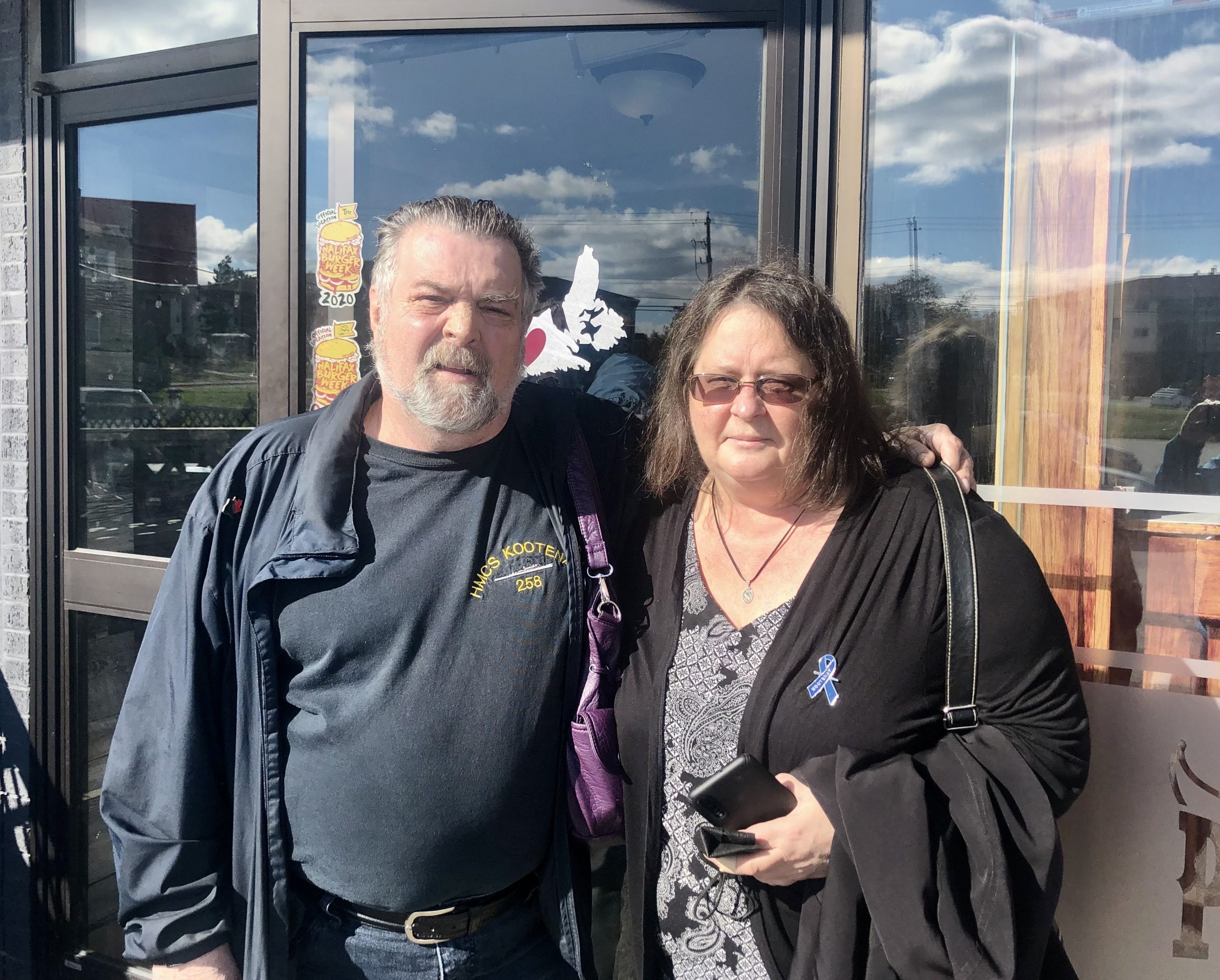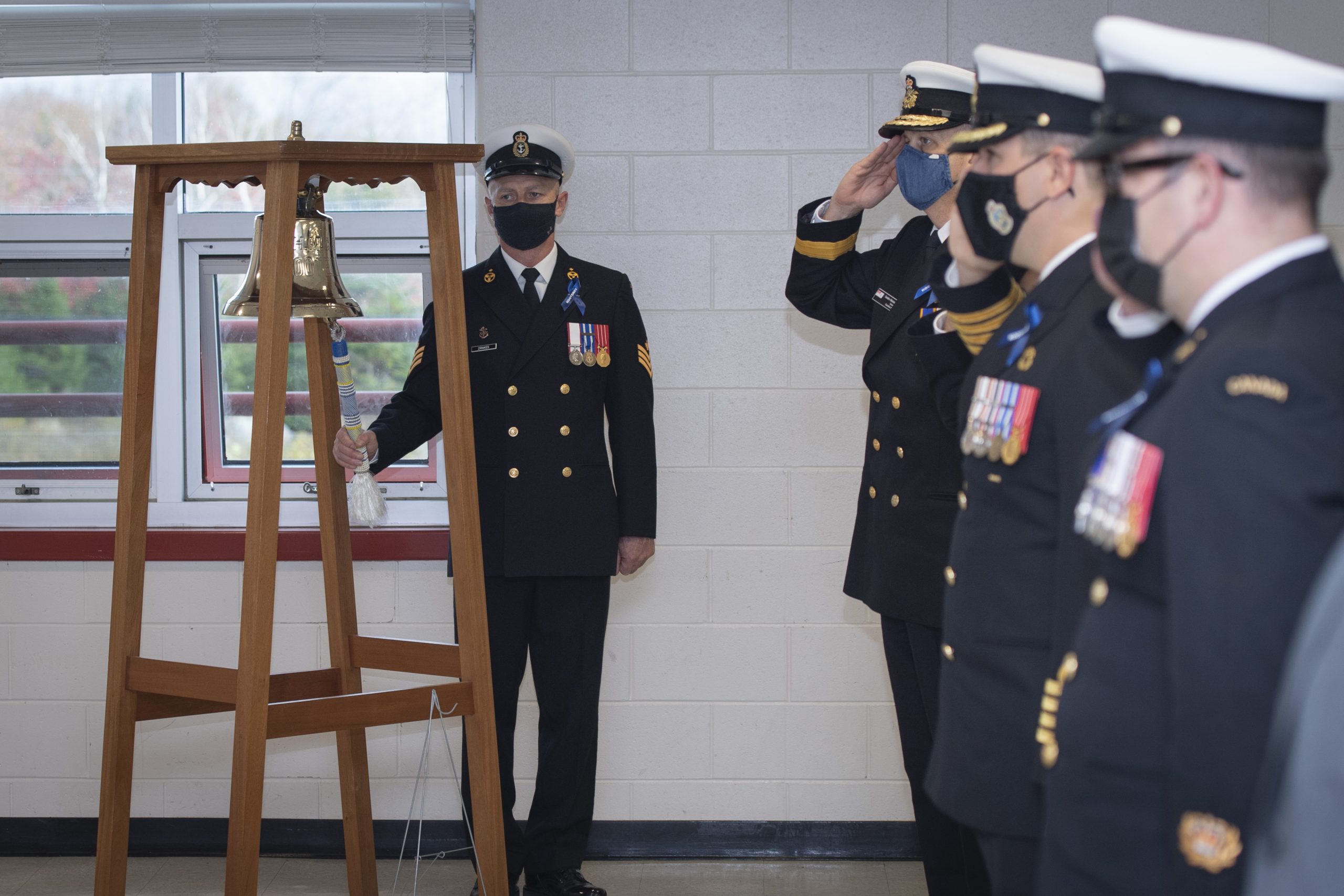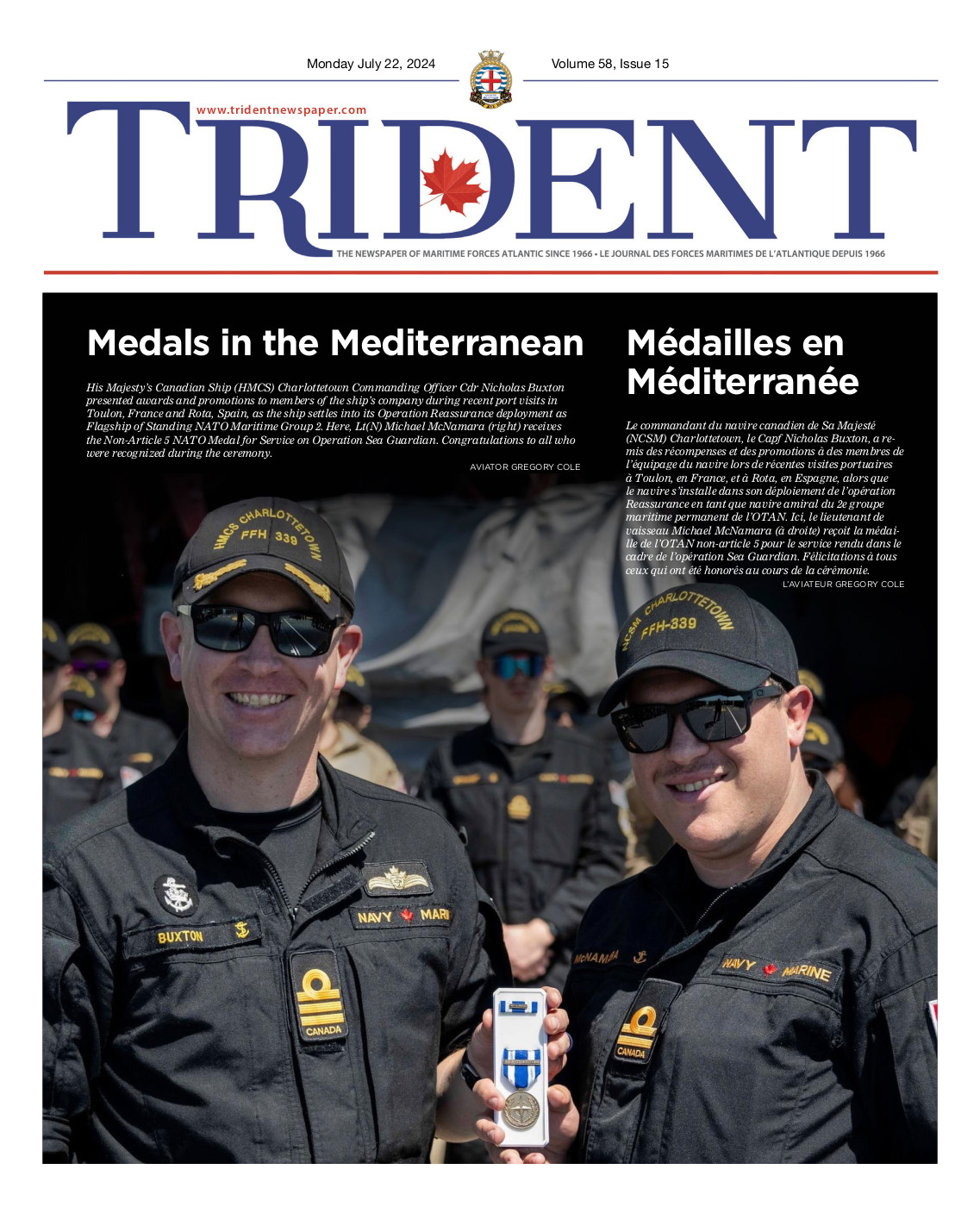
JOANIE VEITCH
52 years on, survivors and family remember HMCS Kootenay tragedy at sea
Par Joanie Veitch,
Équipe du trident
As people gathered to remember and pay tribute at the various events commemorating the explosion and fire aboard HMCS Kootenay on October 23, 1969, it was clear the tragedy marked a turning point — for the crew and their families, and the Royal Canadian Navy as a whole.

SDT CONNOR BENNETT
“Dad never talked about what happened and for the longest time, we never really knew much… he came home a different man,” said Patti Christie, daughter of PO2 Robert “Doc” Christie, the medical assistant on board Kootenay and first responder to the devastating aftermath.
Like many of the Kootenay survivors, PO2 Christie struggled with mental health issues for years following the tragedy. Just ten years old at the time, Christie said the Kootenay explosion marked a definite “before and after” for her father, and her family.
On the morning of October 23, 1969, Kootenay had just started a full-power trial as part of a training exercise off the south west coast of England when a failed bearing caused the starboard gearbox to overheat, resulting in an explosion and fire that blasted through the engine room.
Nine men died from the accident, 53 others were injured — the fact that more did not die that day is a testament to the determination and bravery of the crew of HMCS Kootenay, said Commodore Christopher Robinson, Commander Canadian Fleet Atlantic, at a commemorative service on the 52nd anniversary of the disaster, held at Damage Control Training Facility (DCTF) Kootenay, a training facility named in honour of the Kootenay crew.
“These were all heroes. A lesser crew would have lost that ship,” said Cmdre Robinson. “We owe a debt of gratitude and thanks to that crew, and the people who helped them afterwards.”
Known as the worst peacetime disaster in Canadian naval history, the years following the Kootenay disaster brought huge improvements in fire prevention and damage control equipment and practices on board ship. This meant new safety modifications to ship design and improved training for sailors, most notably at DCTF Kootenay, which opened in 2002 on the East Coast, and DCTF Galiano on the West Coast.
The Kootenay disaster was a catalyst for other changes as well. Military policy at the time dictated that Canadian service personnel killed overseas would not be brought home for burial. Four of the nine Kootenay sailors who died were buried at sea and four more were buried at Brookwood Military Cemetery in Surrey, England.
Petty Officer Lewis John Stringer, the ninth fatality from the Kootenay disaster and the only one buried in Canada, died on his return home, on board HMCS Bonaventure, an aircraft carrier.
“The official government policy at the time was burial in the country in which you died…. No crew members attended any of these funerals on land,” said Leading Seaman (LS) (Ret’d) Allan “Dinger” Bell, in his eulogy at this year’s service at DCTF Kootenay.
LS (Ret’d) Bell, who was only 21 years old at the time of the accident and sustained third-degree burns over nearly half of his body, has been credited for his work to ensure the story of the Kootenay disaster is remembered. In 2019, LS (Ret’d) Bell and 13 other survivors from HMCS Kootenay received the Wound Stripe in recognition for injuries endured 50 years earlier.
Many of the survivors also had to deal with debilitating post-traumatic stress disorder (PTSD).
“At that time there was no treatment or recognition of PTSD for survivors. You were on your own,” LS (Ret’d) Bell) Bell said, in an interview before the anniversary.
Over the past 20 years, LS (Ret’d) Bell has spent “countless hours” on the phone, connecting with other Kootenay survivors and their family members in his efforts to make sure the story of the Kootenay disaster and its aftermath is recognized. These connections have also been a source of healing for all involved.
This year, because COVID-19 restrictions meant fewer people could attend the RCN service at DCTF, the “Kootenay family” also held a service at Parkside Pub in Dartmouth, with representation from local RCN leadership taking part as well.
Patti Christie connected with the group in 2009 after reconnecting with her estranged father in 2003, just three years before he died.
“No one knew what PTSD (post-traumatic stress disorder) was back then, but that’s what he had. We lost my dad that day and I was sad and angry about it for a long time,” said Christie.
Now she acts as the unofficial archivist of the Kootenay family, keeping detailed notes and files on all things related to HMCS Kootenay.
“Meeting these men and their families, and hearing their stories — good stories about my dad — it’s helped me understand him better and I feel closer to him,” Christie said. “After so many years of not talking about it at all, I’m part of this Kootenay family now.”





